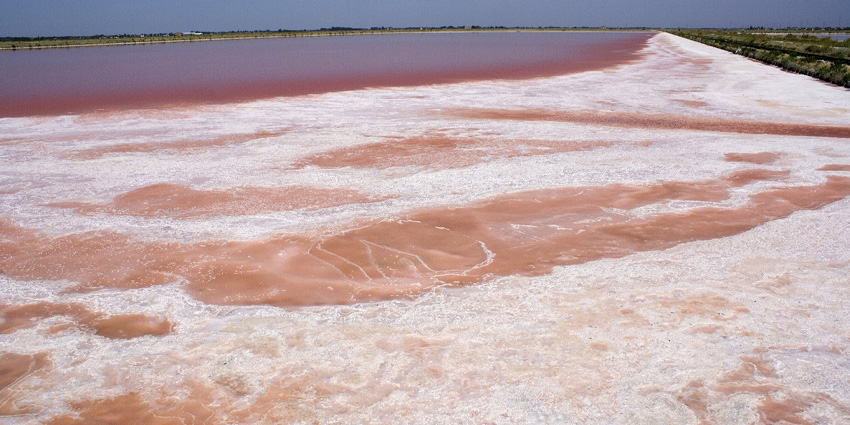
Salina di Cervia: Natural Landscape and Cultural Heritage in the Heart of Emilia-Romagna
Among the most fascinating places in Emilia-Romagna, the Salina di Cervia (Cervia Salt Pan) stands out
as one of the most scenic natural areas in northern Italy. Located at the southern gateway to the Po Delta Park, it is a unique habitat where nature, history, and tradition have coexisted in harmony for centuries.
An Extraordinary Ecosystem Just a Few Kilometers from the Sea
The Cervia Salt Pan covers an area of approximately 827 hectares, situated 1,600 meters from the Adriatic coast. Despite its distance from the sea, the salt works are still fully operational and produce around 5,000 tons of salt each year, thanks to a system of canals and basins that dates back to Roman times.
This landscape, shaped by human hands over the centuries, retains exceptional environmental value. The evaporation and collection basins, laid out in regular geometric patterns, alternate with stretches of water and salt-tolerant vegetation, creating a visually striking mosaic of colors and textures.
Biodiversity and Protected Wildlife
The Salina di Cervia is a privileged location for birdwatching. The area is home to hundreds of bird species, including the iconic pink flamingos, a true symbol of the salt pan. Visitors may also spot black-winged stilts, pied avocets, grey herons, and many other protected species that find a safe refuge here for nesting and migratory stops.
This rich fauna makes the salt pan an ornithological site of European significance. Its shallow waters and high salinity create ideal conditions for the proliferation of small crustaceans and algae, which in turn sustain a diverse and delicate food chain.
A Site of Historical and Cultural Importance
Beyond its natural value, the Salina di Cervia is also an important historical and cultural site. The salt produced here—known as “Cervia’s sweet salt”—is renowned for its purity and lack of bitter minerals. Once considered a precious commodity, salt was for centuries the main economic resource of the area.
Traditional salt harvesting methods are still preserved and showcased at the Salt Museum (Museo del Sale), located in the center of Cervia. The techniques used reflect a strong connection to the local culture and help keep alive the collective memory of a community long linked to salt production.
A Landscape to Be Experienced in Every Season
The Salina di Cervia transforms with the seasons, offering ever-changing scenery and atmospheres. In spring and summer, the colors intensify, flamingos gather in large flocks, and the sunlight enhances the shimmering reflections of the saltwater basins. In autumn and winter, a serene stillness takes over, making the salt pan an ideal place for those seeking peace and contemplation.
The area, accessible in a regulated manner, allows visitors to engage with nature without disturbing its fragile balance. Walking paths, cycling routes, and birdwatching stations offer immersive experiences in an environment that has remained remarkably authentic.
The Salina di Cervia is more than just a beautiful landscape—it is a biodiverse ecosystem, a place of historical memory, and a cultural heritage site of Emilia-Romagna. As part of the larger Po Delta Park, it stands as a must-see destination for anyone wishing to explore the region’s true natural essence.




